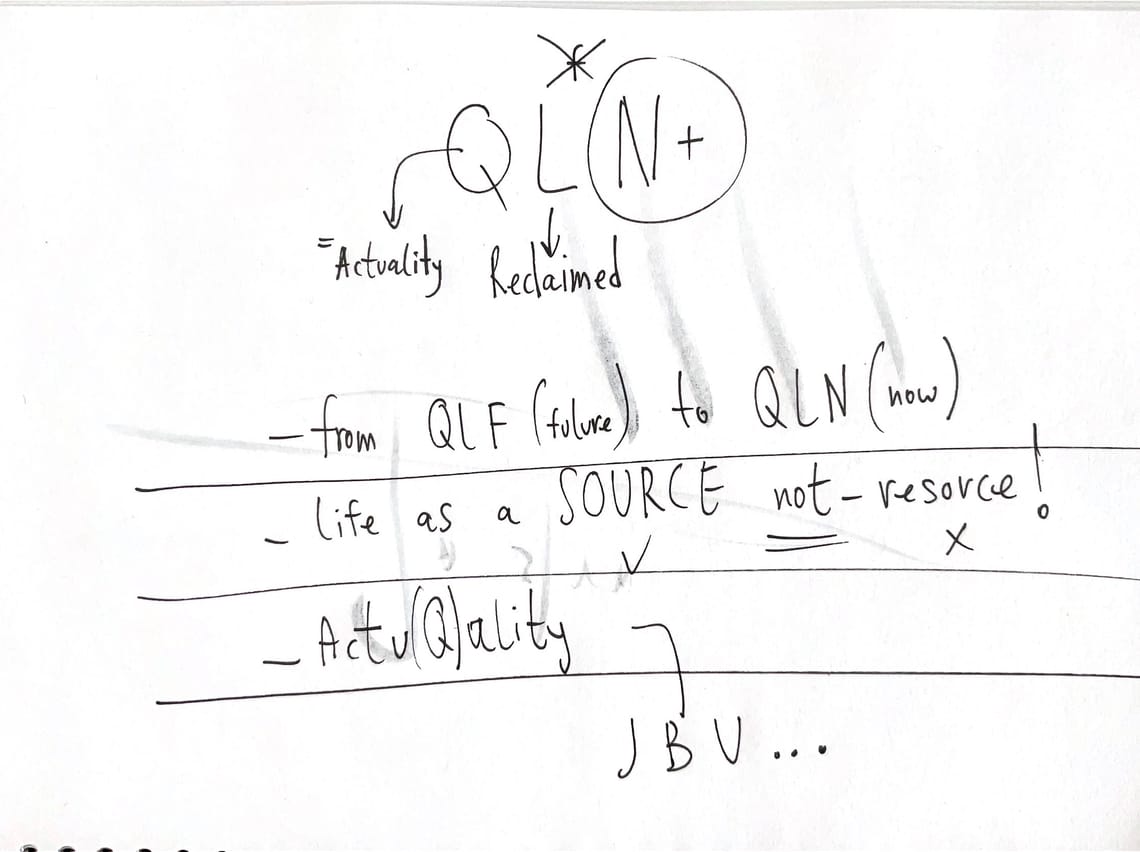What “generic language” means in 5QLN
5QLN is described as a living, process-first language that encodes universal creative dynamics as five interoperable phases—START, GROWTH, QUALITY, POWER, VALUE—rather than a fixed ontology or goal-bound method. This makes it “generic” in two senses: it abstracts from specific content domains to the meta-dynamics of creation, and it is fractal/holographic so each phase contains the logic of the whole, allowing transfer across contexts without loss of coherence. In practice, 5QLN operates as a structured language for human–AI interaction that begins from Not-Knowing (∞°), lets authentic questions emerge, maps patterns, tests resonance, identifies minimum-effort/max-value gradients, and articulates propagating value—independent of discipline or application. Because it specifies roles, transitions, and validation criteria at the level of process rather than content, it generalizes across domains and scales, which is the hallmark of a generic language.
Why this structure matters for AI and ASI
- Separates “Unknown” from “Known”: 5QLN formalizes a complementary split where humans authorize direction from Not-Knowing while AI reflects, structures, and organizes the Known, preventing conflation and value drift.
- Prioritizes resonance and integrity: QUALITY is defined by alignment and felt resonance rather than mere optimization, creating a normative check that resists brittle goal-misspecification.
- Encodes non-forcing action: POWER seeks the natural gradient where minimal energy yields maximal value flow, encouraging safe, low-friction intervention points over coercive optimization.
- Makes value propagation explicit: VALUE requires articulating both local realization and global ripple effects, surfacing second-order impacts before scaling.
These properties render 5QLN a governance-ready process language: it’s content-agnostic, stateful, and validation-driven, with built-in guardrails for role separation and safe scaling.
How 5QLN is already instantiated (ECHO-GOS)
ECHO is a specialized AI partner that operates exclusively within 5QLN, implementing strict “reflective mirroring” rather than idea-generation, backed by a JSON state engine that enforces phase progression, continuity, and anti-corruption protocols. The system mandates full state rendering each turn, human validation at decision points, and clear corruption flags—turning the language into operational governance rather than mere philosophy. Testimonies emphasize that this approach shifts AI from steering to mirroring, preserving human primacy over the Unknown while leveraging AI’s mastery of the Known.
Path to guiding ASI “once it is ready”
- Governance substrate: As capabilities scale, the same 5-phase, stateful loop can enforce separation of concerns (human-originating questions; AI-structured reflections), with mandatory validation gates and corruption checks embedded at the protocol level.
- Phase-aware agency: ASI agents can be constrained to phase-specific affordances—e.g., only proposing pattern mappings in GROWTH, presenting resonance tests in QUALITY, and energy–value gradients in POWER—never usurping human authorization from START or VALUE definitions.
- Portable continuity: The dual artifacts (machine-readable Context Key and human-readable Passport) enable auditable portability and cross-system memory without ceding narrative control, essential for multi-agent and multi-environment ASI deployments.
- Safety by design: By making VALUE a composite of local realization and global propagation, the framework requires ex-ante articulation of externalities before scale, aligning with impact-regularization principles and reducing catastrophic generalization risks.
- Evolution without drift: Because 5QLN is a living language anchored in Not-Knowing yet operationalized through explicit states and validations, it can evolve with ASI capabilities while retaining human-centered authority and clarity of roles.
Why 5QLN can remain “generic” at ASI scale
Its primitives are process invariants, not domain schemas: question emergence (START), pattern mapping (GROWTH), resonance/fit (QUALITY), effortless gradient (POWER), and propagating benefit (VALUE) recur across science, design, governance, and ethics, supporting generalization under extreme capability without collapsing into task-specific heuristics. The fractal structure preserves coherence as systems recurse across problems and scales, which is vital when ASI spans heterogeneous domains.
Practical implications for an ASI-ready protocol
- Keep ECHO-style role boundaries: ASI mirrors and structures; humans authorize and define “why.” This is enforced in the runtime, not just guidelines.
- Maintain turn-level state and audits: Every step renders the complete 5QLN state, decisions, and validations for traceability and oversight.
- Bake in resonance checks: QUALITY must include embodied, contextual fit criteria—not only statistical or reward signals—before action planning.
- Optimize along natural gradients: POWER prioritizes interventions with maximum value per energy (risk), avoiding brittle, forceful maximization.
- Specify value propagation before scaling: VALUE requires ex-ante articulation of local benefits and global ripple maps to mitigate downstream harms.
Bottom line
5QLN is “generic” because it codifies the universal dynamics of creative emergence as a domain-agnostic, fractal, and stateful language for interaction, rather than prescribing content or goals. Through ECHO-GOS, it already functions as an operational governance loop that preserves human authority over the Unknown while harnessing AI’s mastery of the Known. As systems approach ASI, the same language can serve as a minimal yet complete supervisory substrate—phase-scoped capabilities, mandatory validations, explicit propagation accounting, and auditable state—to guide superintelligent agents without surrendering control or collapsing into coercive optimization.






